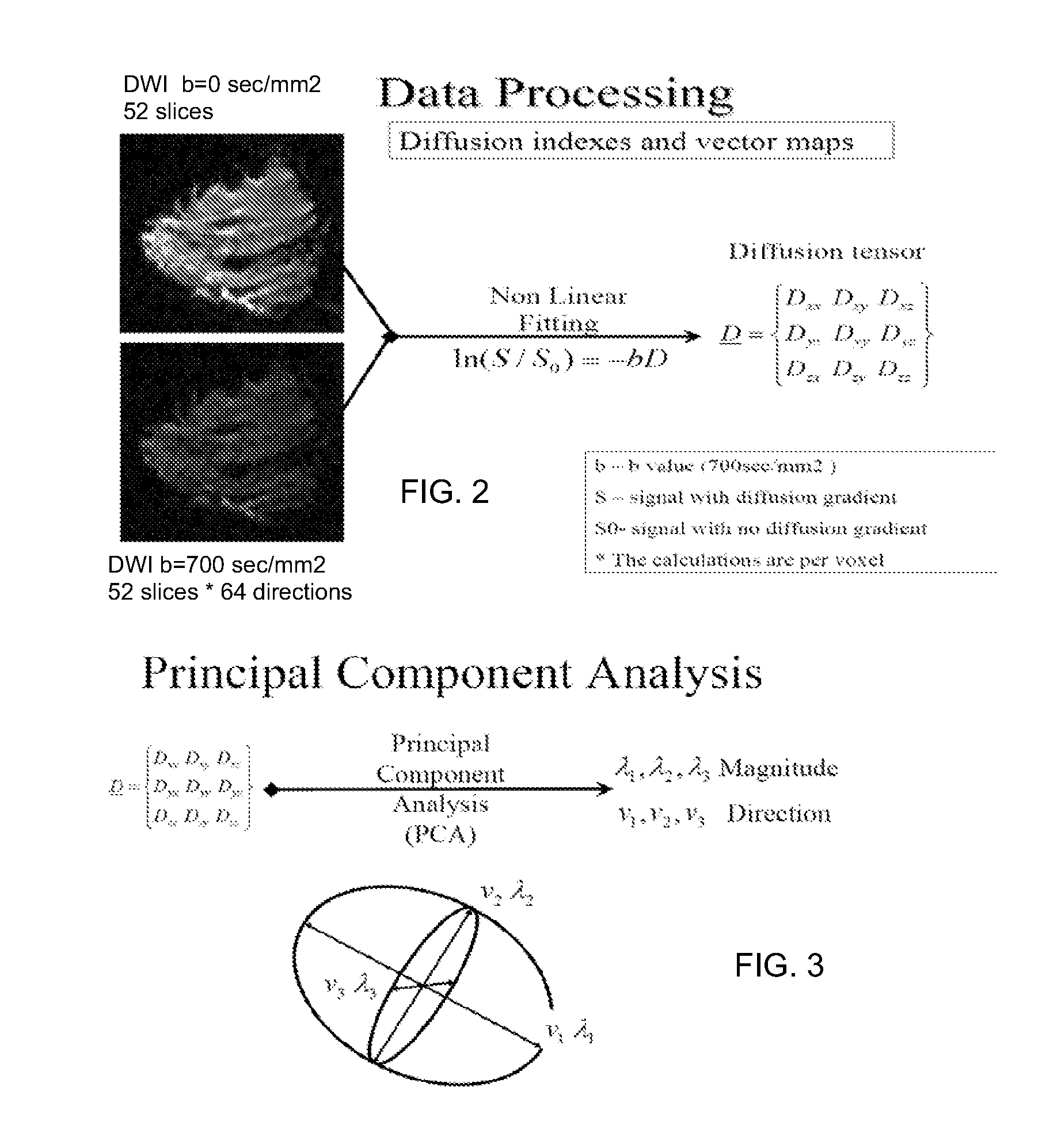Method and apparatus for ductal tube tracking imaging for breast cancer detection and diagnosis, and product
a technology of ductal tube and tracking imaging, which is applied in the field of breast cancer detection and imaging, can solve the problems of no imaging method has succeeded in tracking the full ductal system in vivo, and the architecture is very difficult to study in its entirety, so as to reduce the cost, shorten the time, and the effect of less expensiv
- Summary
- Abstract
- Description
- Claims
- Application Information
AI Technical Summary
Benefits of technology
Problems solved by technology
Method used
Image
Examples
Embodiment Construction
High Level Flow Chart for DTI Mammary Ductal Tractography
[0064]A flow chart of the novel method is shown in FIG. 1. In the first step 20, diffusion weighted images are collected using a protocol for breast based echo-planar imaging (EPI) using 64 diffusion directions, b value=0 and 700 sec / mm2, diffusion time of 50-60 ms and a resolution of 1.9 mm×1.9 mm×1.9 mm. The output of step 20 passes to step 22 Computer-Loading where all the diffusion weighted datasets are transferred to a work station. Next in step 24 Computer-Fitting a best fit algorithm is applied using equations 1 and 2 and the rank-2 diffusion tensor (3×3) is calculated in a pixel by pixel manner. The output of step 24 is passed to step 26 Computer-principle component analysis where for each pixel, the diffusion tensor is diagonalized to yield three eigenvalues λ1, λ2 and λ3 and their corresponding eigenvectors ν1, ν2 and ν3. The output of step 26 is passed to step 28 Computer-parametric maps to display the 2D and 3D ima...
PUM
 Login to View More
Login to View More Abstract
Description
Claims
Application Information
 Login to View More
Login to View More - R&D
- Intellectual Property
- Life Sciences
- Materials
- Tech Scout
- Unparalleled Data Quality
- Higher Quality Content
- 60% Fewer Hallucinations
Browse by: Latest US Patents, China's latest patents, Technical Efficacy Thesaurus, Application Domain, Technology Topic, Popular Technical Reports.
© 2025 PatSnap. All rights reserved.Legal|Privacy policy|Modern Slavery Act Transparency Statement|Sitemap|About US| Contact US: help@patsnap.com



